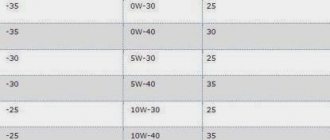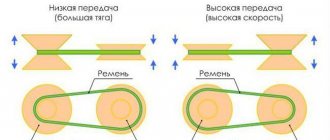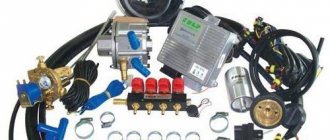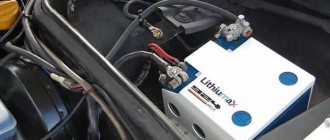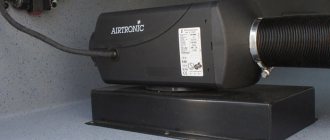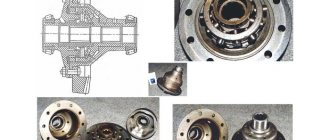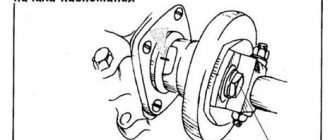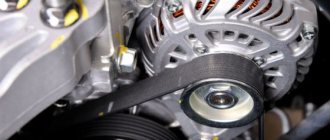Such a convenient addition as a passenger trailer is an ideal solution for those who want to significantly increase the capabilities of their own car, which is why many car owners consider such a vehicle simply necessary.
Most often, a single-axle passenger trailer is chosen for transporting large cargo.
But many believe that driving with a trailer is no different from normal driving, which in some cases leads to irreparable consequences. As a rule, any driver requires much more experience and knowledge when compared with normal driving.
If you want to purchase such a device and often transport cargo in it, then be sure to familiarize yourself with the main rules and nuances of driving with a tow hitch.
Rules for driving with a trailer
How to drive with a trailer correctly and as safely as possible? To begin with, it should be recalled that the driver does not need a separate category to transport a passenger trailer. If the trailer has a mass that does not exceed the weight of the car itself, then category “B” will be quite sufficient.
Light single-axle trailers do not have a high load capacity compared to their heavy counterparts. Moreover, they do not have a braking system, which should be especially taken into account. The weight of such trailers does not exceed 750 kg.
If the driver has categories “C” and “D”, then he has the right to use trailers with a higher carrying capacity, which allow transporting larger loads. Heavy trailers weigh more than 750 kg.
To transport trailers, the car must be equipped with a high-quality coupling unit. As a rule, it comes in a standard form and has a special socket for connecting all lighting elements. Carefully check all components of the trailer for serviceability: the operation of the brake lights, and most importantly, the serviceability of the trailer itself.
If the fasteners are connected incorrectly, then there is a high probability that a serious problem may arise while driving, or even an emergency due to your fault, which does not entail anything good.
Therefore, approach the inspection of the trailer with all responsibility. If the trailer turns out to be wider and protrudes beyond the dimensions of the car, then you definitely need to take care of the rear-view mirrors. They should be larger and wider so that the driver can easily see everything that is happening behind.
Now let's move on to the nuances regarding management. Driving with a trailer in a passenger car requires maximum concentration from the driver, as maneuverability becomes much lower. Turning should be done more smoothly and slowly, and the speed while driving should not exceed 60 km/h.
If you are going on a long journey, then be sure to take special supports with you, which, if necessary, will help secure the towbar if the car has stopped on an uphill or downhill slope.
It should also be taken into account that when transporting a tow hitch, fuel consumption may increase significantly (20-30%), so make sure you have some in reserve.
Let's now take a closer look at each of the above rules.
Inspecting and preparing the trailer for towing
Check the hitch elements
The lock must work properly, that is, it must securely fix the connection elements. Safety cables or chains must also be securely fixed in place. If there is play between the towbar ball and the hitch assembly, it must be eliminated.
Lubricate the tow bar
Graphite lubricant applied before the trip (if the trailer hitch needs it) will reduce the intensity of friction of the hitch elements, and also increase the reliability of the electrical contact between the car and the trailer.
Check bearing operation
To identify any problems (or lack thereof), you need to lift the trailer and spin the wheels.
Inspect the shock absorbers
If they malfunction, the trailer will “wobble” while moving, and this will create certain difficulties in control and may cause the vehicle train to skid.
Check the warning lights
Make sure they work properly and without interruption.
Check tire pressure
Level if necessary. The tire pressure should not be different.
Kia Cadenza 2020: photos, specifications, price
Updated Peugeot 2008: first details
Land Rover Defender 2020 pickup photo
First of all, it is worth understanding that, just like driving a car without a license, operating a trailer without the appropriate mark on the driver’s license is also considered illegal. Therefore, the first thing you need to do is get a license for a trailer, in other words, open category E.
Driving with a trailer without documents is considered a violation and is punishable by a fine of 5 thousand rubles. In addition to the open category, it is important that it be included in the auto insurance policy along with the car.
Maximum permissible trailer dimensions:
- Width with wheel arch protrusion – 2.55 m
- Height from the road surface – 4 m
- Length including car – 20 m
The speed limit for vehicles with a trailer is limited and is the maximum allowed when driving on the highway 90 km/h, and for others it should not exceed 70 km/h.
Since driving a vehicle with a trailer is more dangerous, it is important to pay attention to the condition of its individual elements:
- The hitch elements must be securely fixed to each other - any malfunction of the lock is unacceptable. If there is play between the towbar sphere and the cap part, it must be eliminated.
The coupling device must be in good working order; a faulty lock is unacceptable.
- It is recommended to lubricate the towbar ball with graphite lubricant. It will reduce friction of the coupling elements and increase contact with the vehicle's weight.
- Pay frequent attention to wheel bearings. To do this, lift the trailer and spin each wheel. If the rotation of one or both wheels is difficult or noisy, it is necessary to lubricate the bearings or replace them.
- The shock absorbers are also worth inspecting. Their malfunction can cause skidding when moving.
- Signal lights and tire pressure are also tested. When loading a trailer with 750 kg, the pressure in its tires should be 1.9 atm.
Transporting a trailer with a manual, automatic or robotic transmission is allowed, but with a CVT it is problematic. It's all about its design, so it's not for nothing that drivers are concerned about the issue of combining a variator with a trailer. The variator is afraid of overloads; it is forbidden to tow other vehicles on it.
And yet, most cars equipped with it can easily transport a trailer. The main thing is to carefully read the maximum permissible load on a given unit. In most cases the peak load is one ton. However, it is not recommended to constantly use a car with a CVT to transport a trailer, even with optimal cargo weight. Such cars are created primarily for the comfort of the driver and passengers, and not for freight transportation.
Driving in reverse gear is in itself more difficult than in forward gear, and driving a trailer in reverse is generally an impossible task for beginners. Nevertheless, everyone can learn this, although they will have to spend a lot of time and nerves.
Error-free driving with a trailer in reverse can only be achieved through practice.
Practice makes all the difference. The main thing that the driver should remember is how to level the position of a trailer that constantly moves to the side.
In theory, everything is quite simple. When reversing, the trailer will, one way or another, move to the side. To maintain the trajectory of movement, the driver must sharply turn the steering wheel approximately half a turn, in one direction or another. For example, if while moving backwards it begins to move to the left, the driver must sharply turn the steering wheel to the right and sharply return it to its original position as soon as the trailer is leveled. On the one hand, this is not difficult, but in practice, at first it is extremely difficult for every driver to cope with this task.
Turning in reverse with a trailer is even more difficult. However, it is better to start learning how to perform such a maneuver towards the driver’s position, usually to the left. It is better to devote a lot of time to this until the technique is perfected until it becomes automatic.
When using a trailer with an awning, reversing is even more difficult, since the view of the rear space is limited and it is more difficult to determine the situation behind. Often you have to look back through an open door, or leaning out of the window.
Driving with a trailer in reverse and turning
By purchasing a trailer, you can purchase additional side mirrors with an increased viewing angle. To some extent, they can really help when moving with it, but it is worth remembering that the wider the angle, the greater the distance error in the mirror.
Additional control mirrors
An important feature of traveling with a trailer is its mandatory registration with the traffic police. Since it is a full-fledged vehicle, the rules provide for its operation only with vehicles equipped with towbars and plug sockets. External lights on the trailer must be in full working order.
To safely drive a car with a trailer, carefully check the condition of the trailer lock and the reliability of the safety chains and cables. Negligence when checking the technical condition is fraught with accidents and administrative liability under Art. COAP 12.5 “Driving a vehicle in the presence of malfunctions.”
READ MORE: Fines for overloading a car 2020, amount, fine for overloading a passenger car with passengers, overload on axles
Rules for driving a car with a tow hitch
The main important features of such management include the following nuances:
- The most important thing is to always remember the fact that if a towbar is attached to the vehicle, this greatly affects its behavioral characteristics while driving, which requires maximum attention and caution from the driver. The length of the braking distance greatly depends on the weight of the load, so at intersections or when entering a turn, the brake pedal must be pressed in advance. Also try to keep a greater distance from other cars, which is especially important in heavy traffic. If the towbar is not fully loaded or the car is completely empty, it still loses its dynamic performance, so the driving rules in such a case are completely different.
- Even a vehicle with high cross-country ability loses controllability and maneuverability while transporting a tow hitch. Therefore, the road train must be operated at low speeds, while trying not to make sudden accelerations or braking.
- Transporting a passenger trailer requires careful measurements of the entire length of the road train, as well as the overall dimensions to determine the so-called “turning corridor”, in other words, the trajectory along which the road train moves when entering turns.
- When driving a car with a trailer, you must take into account the required distance between you and other cars when overtaking or entering a turn. There should be enough distance reserve, as well as time for maneuver.
- When transporting trailers for passenger cars, the release should be as smooth as possible, without any jerks, otherwise the wheels may begin to slip, which entails tire wear and also reduces the traction of the wheels with the road. This can lead to breakdown of some transmission components, as well as the coupling mechanism, or to an emergency.
- If the road train encounters any obstacle in time, it is necessary to go around it along a larger trajectory. Returning to your lane involves performing the same action.
- It is not advisable to overtake with a tow hitch, but if necessary, such a maneuver should be performed very carefully.
- The trailer can cause skidding, as well as the so-called “folding”. This effect can occur when braking and also when turning. Therefore, before maneuvering, it is necessary to reduce speed to a minimum.
- Driving over rough terrain can damage the hitch and other components. Therefore, try to keep the vehicle and towbar moving between the tracks.
- Reversing is one of the most difficult maneuvers when driving with a trailer, so reversing with a trailer must be learned in advance.
- Pay special attention to the correct placement of the load. It is recommended to use “weight distribution” when the drawbar rests on the hitch with a force of 40 to 100 kg.
Can a driver with category B take a trailer in 2017-18?
If we look at the current legislation, then a driver with category “B” can take a trailer if the towed trailer weighs no more than 750 kg or if the loaded vehicle weighs no less than the load on the trailer. The permitted maximum weight in this case is no more than three thousand five hundred kilograms.
Can trailers be used for each vehicle? This is possible if the loaded vehicle weighs more than the load on the trailer. From a technical point of view, the trailer hitch unit can be installed on any car.
To use a trailer, the vehicle is retrofitted. A towbar is installed on it, and additional electrical wiring is installed for lighting devices (brake lights, turn signals).
There are also some rules to consider when placing cargo. It is necessary that it is correctly laid on the surface without overweight in one direction. If the center of gravity moves to the front, it will place stress on the hitch and the entire rear of the machine. This will cause the wheels to have poor adhesion to the asphalt.
If the load moves to the rear, the rear wheels on the vehicle will lift slightly.
Drivers should also be aware that it is not allowed to transport a person in a trailer, since it is intended only for things, even if it is a caravan trailer. It is prohibited to transport explosive and flammable substances, such as household gas cylinders or gasoline in a canister. Despite this, many drivers transport these items in trailers, and it is rare for a police officer to find fault with this. But only if you transport one cylinder at a time, and not ten. Otherwise, wait for legal braking.
Examples of correct and incorrect placement of cargo on a trailer
Incorrect placement implies excessive displacement of the load to one side relative to the axis of the towbar. This significantly increases the load on the coupling mechanism, which affects maneuverability and overall controllability.
If the road train goes on a long trip, then it is necessary to stop regularly to check that the fastening is secure and that the load has not shifted.
Also carefully check the hitch, as well as light elements, tire pressure, both on the car and on the towbar, etc.
